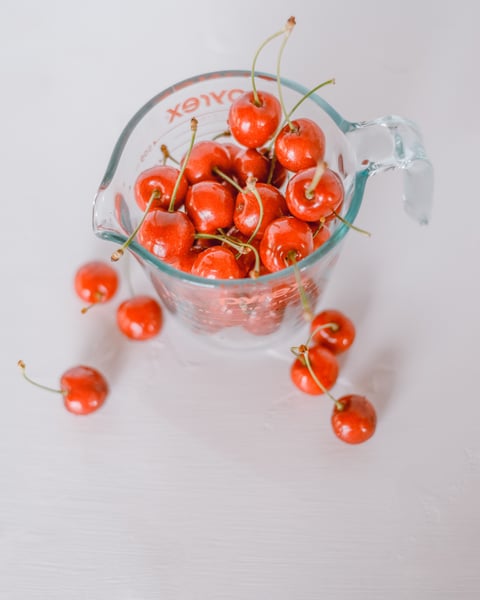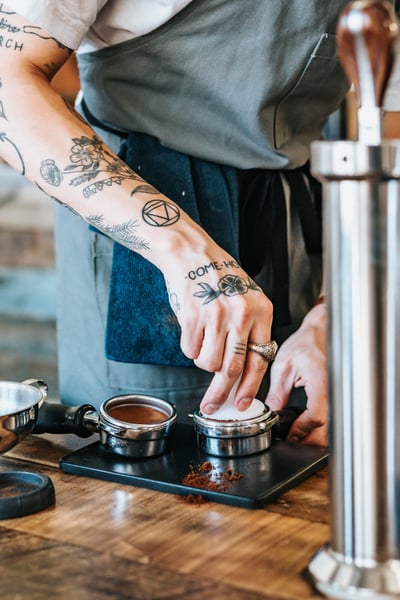When it comes to Hospo, there’s a constant race against the clock to avoid food and beverage wastage. But up to 75% of cafés, restaurants and accommodation businesses agree that reducing waste and increasing recycling is part of being a sustainable and ethical business.
Food waste accounts for 62% of the waste placed in the average café or restaurant bin. That’s a lot of moolah you could be savin’. More than half of Hospo business owners agree that managing waste efficiently improves their bottom line and gives them a competitive edge.
And the environment will thank you for it. Food scraps in landfill contribute to climate change and produce methane, a greenhouse gas 25 times more powerful than carbon dioxide.
A report on tackling the global food waste crisis found “companies that play a major role in the food chain can be catalysts for change.” With many Hospo industry venues embracing sustainability, reducing waste is on the menu now more than ever.
Measuring, planning, inventory management, training and adopting tech solutions are key ingredients of an effective restaurant food waste strategy.
Measure food waste

The first step to understanding food waste patterns is to measure your food waste. Once you know what you’re throwing out, you can implement creative food wastage solutions.
Conducting a food waste review is easy. Here are the steps from Love Food Hate Waste:
-
Collect three buckets. Label them “food preparation waste”, “food spoilage”, and “plate waste”.
-
Ask staff to separate food waste into the corresponding bins.
-
Weigh each bin at the end of the shift, day or when full. Record the corresponding number of meals served in that shift or day, then calculate waste per plate. Do this for a week, tracking totals on the Food Waste Review Form.
Use these insights in waste types to develop an action plan for waste reduction. Amanda Kane from the NSW Environmental Protection Authority provides some great tips:
-
High levels of preparation waste can indicate that you’re throwing away good parts of produce or meat, or staff may be over-trimming.
-
Common causes of spoilage include ordering too much and poor storage practices.
-
Reconsider serving sizes to reduce plate waste.
Most states and some local government areas have free programs to help Hospo businesses to reduce food waste, such as the NSW Your Business is Food Program.
Practice good stock control
Inventory management is challenging for food businesses. Demand is a constantly moving target that can be difficult to predict, particularly during times of uncertainty.
“Efficient inventory management is vital to the health and success of a food business — and many operators aren’t using it to its full potential”, according to the Australian Institute of Food Safety. Effective stock control can help to avoid food spoilage or surplus issues.
-
Ensure perishable products are in top condition when delivered.
-
Use a first in, first out or “FIFO” system for perishable and non-perishable items.
-
If storing ingredients in containers other than their original packaging, write use by dates on the containers.
-
Implement a “best before” labelling system for prepared foods such as chopped meats and vegetables.
-
Organise storage spaces to minimise the chance of perishables reaching their use-by date before use.
-
Train staff in stock control measures and FIFO systems.
-
Buy local and seasonal produce. It’s generally cheaper and fresher, so it will last longer.
 Track food ordering patterns
Track food ordering patterns
Data really is the new oil when it comes to the Hospo industry. And with the right technology, understanding your food ordering patterns as part of restaurant waste management has never been easier.
HungryHungry’s dashboard allows you to view daily and weekly stats to make more informed purchasing decisions.
-
Get granular with detailed information about sales.
-
Track trends such as item sales by time of day and day of the week.
-
Identify seasonal changes in ordering patterns.
-
Quickly identify poor performers.
Combined with insights from measuring food waste, this information can highlight issues such as portion sizes being too large or menu items that aren’t quite hitting the mark.
Plate it all
Creative use of ingredients and smart menu planning are two common ways to prevent food wastage. Consider how you can incorporate items you would normally throw away.
-
Embrace nose to tail cooking using as much of the animal as possible. Turn tougher cuts into braises or stews
and make stock with the bones. -
Consider offering several portion sizes.
-
Keep the main event as just that. Offer garnishes and side orders as optional extras.
-
Have a plan for using excess ingredients. Turn unused fruit or vegetables into a morning juice special, make use of freezers
or use HungryHungry to create a two-for-one offer. -
Shake up a new cocktail by turning leftover orange peel into syrup or overripe bananas into a delightful concoction.
Dirty banana daiquiri, anyone? -
Allow customers to take leftovers with them.
Incorporate a trending section into your digital menu
Ladro is a popular, modern and sustainable Italian restaurant serving up some of the best pizza in Melbourne.
Ladro has been using HungryHungry’s Order@Table feature in their venues since March 2020. When searching for imaginative ways to reduce food and beverage wastage and maintain revenue on stocked items, they asked us for assistance. Ladro needed a quick solution to promote specific menu items.
HungryHungry worked with Ladro to prioritise overstocked items, and within a few hours, Ladro had a new and improved Trending section on their digital menu. The selected items were top of the menu, top of mind, and soon top of the tummy. Ladro can update the Trending section in real-time in the user-friendly HungryHungry dashboard.
The results achieved with HungryHungry speak for themselves:
-
5X increase in sales on drinks.
-
5X increase in sales on meals featured in the trending section.
-
98% increase in sales on overstocked items.
Ladro reports a vast improvement in sales for items listed in the Trending section, which is regularly updated depending on popularity, seasonal specials and surplus stock.
Involve staff
Julia Child once said, “a party without a cake is just a meeting”. There’s no better way to generate food saving ideas than getting staff involved and cake is always a great icebreaker. So serve up the cake and brainstorm with your team.
- Share the results of the food waste audit as a thought-starter.
- Ask for ideas and suggestions.
- Identify staff champions in critical areas of operation.
- Develop opportunities for education and training.
- Gamify the process with rewards and incentives.
 Compost
Compost
According to the WWF, wasted food accounts for about 8% of all global greenhouse gas emissions. Composting may seem like just another thing to do when you have a Hospo business but the benefits are enormous. Not only will you reduce your business greenhouse gas emissions, you could also slash waste disposal costs.
There are loads of different composting options - from the humble backyard-style bin to large-scale commercial ventures. Below are some ideas to get you started:
-
If you have the space, install compost bins at your venue.
-
Start small by composting a couple of items first.
-
Bag up coffee grounds and make them available to customers to compost at home.
-
For larger venues, consider on-site commercial composer's such as Closed Loop.
-
Explore commercial composting and organic waste collection services. For example, Cleanaway worked with the South Australian Produce Market to reduce organic and packaging waste to landfill by 70%.
-
Consider partnerships with suppliers that offer composting services such as BioPak Compost Connect.
Food wastage solutions for restaurants range from simple steps you can implement immediately, such as giving away used coffee grounds for home composting, to longer-term strategies such as nose to tail dining. Technology is emerging as a vital component of any restaurant food waste management strategy, offering valuable insights and the ability to move overstocked items faster.
With HungryHungry, you can create stunning digital menus and a super profitable, more sustainable Hospo business. HungryHungry’s Order@Table feature has already worked to reduce wastage for our partner venue, Ladro. Find out how you can help your venue manage excess stock too.
Book a demo today.





